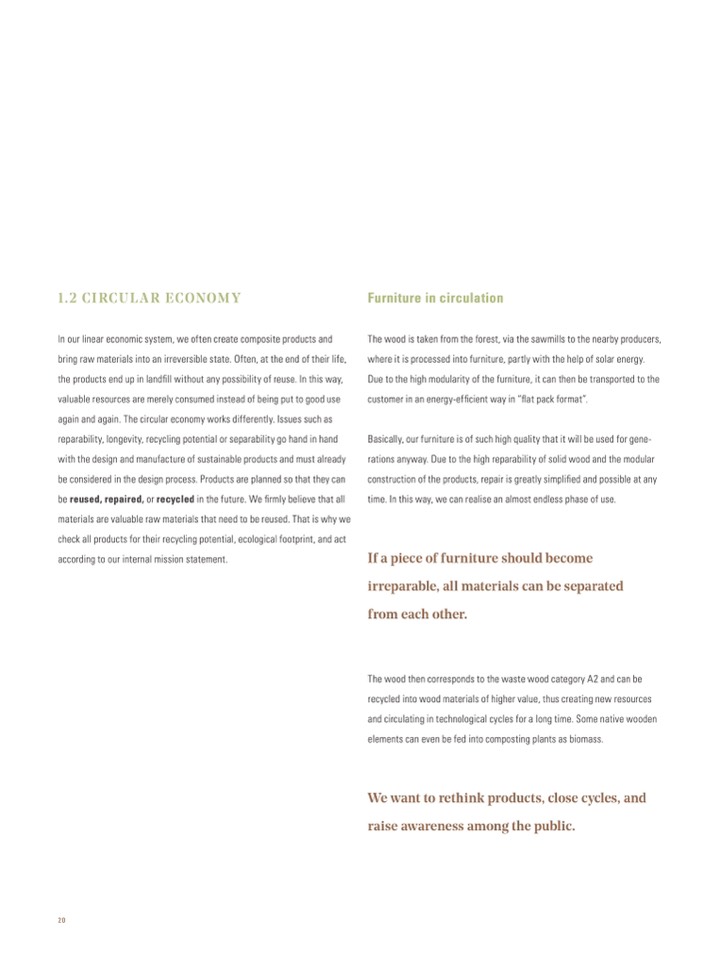
1.2 CIRCULAR ECONOMY
In our linear economic system, we often create composite products and
bring raw materials into an irreversible state. Often, at the end of their life,
the products end up in landfill without any possibility of reuse. In this way,
valuable resources are merely consumed instead of being put to good use
again and again. The circular economy works differently. Issues such as
reparability, longevity, recycling potential or separability go hand in hand
with the design and manufacture of sustainable products and must already
be considered in the design process. Products are planned so that they can
be reused, repaired, or recycled in the future. We firmly believe that all
materials are valuable raw materials that need to be reused. That is why we
check all products for their recycling potential, ecological footprint, and act
according to our internal mission statement.
Furniture in circulation
The wood is taken from the forest, via the sawmills to the nearby producers,
where it is processed into furniture, partly with the help of solar energy.
Due to the high modularity of the furniture, it can then be transported to the
customer in an energy-efficient way in “flat pack format”.
Basically, our furniture is of such high quality that it will be used for gene-
rations anyway. Due to the high reparability of solid wood and the modular
construction of the products, repair is greatly simplified and possible at any
time. In this way, we can realise an almost endless phase of use.
If a piece of furniture should become
irreparable, all materials can be separated
from each other.
The wood then corresponds to the waste wood category A2 and can be
recycled into wood materials of higher value, thus creating new resources
and circulating in technological cycles for a long time. Some native wooden
elements can even be fed into composting plants as biomass.
We want to rethink products, close cycles, and
raise awareness among the public.
20

